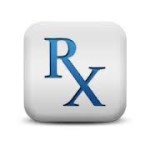
Free CEUs & CME for Pharmacists
The CME & Contact Hours You Need Today for RPh License Renewal
|
WELCOME! We are proud to sponsor this educational initiative, dedicated to providing free Pharmacist CME, CEUs & CPE required by many state boards for Pharmacist license renewal. Check back often for updates, including new free Pharmacist CME courses offering free CEUs that are posted frequently. Through extensive content review, our staff approves free Pharmacist CEU courses that are timely and approved for ACPE Credit.
ALL CEU, CME & contact hour offerings are FREE! |
|
Select a course by clicking the title. Courses or fees may have changed on provider’s websites since their posting here. Always check the provider’s website for accreditation information, terms and conditions of courses offered. Courses listed here are not the property of FreeCME4Me, nor do we offer any courses & are not responsible for the those posted on this site
|
To check Pharmacy CME requirements by STATE CLICK HERE!
|
|
Defining the Role of Pharmacists in Advanced Gout Management- Discuss the pathophysiology of gout, its risk factors, and long-term complications. Outline the clinical profiles of available and emerging gout pharmacotherapies including safety, efficacy, mechanisms-of-action, implications, and potential shortfalls of conventional agents. Assist providers on the guideline-directed and individualized selection, modification, and monitoring of gout therapies. Counsel patients on non-pharmacologic and pharmacologic approaches to care, emphasizing the importance of adherence to therapies and lifestyle modifications. 1.0 Free Contact Hours Feeling the Burn - The Pharmacist's Role in Treating Dry Eye- Review the basics of dry eye including symptoms and causes. Describe the FDA approved over-the-counter and prescription medications available to treat dry eye disease to include mechanism of action and side effects. Outline key considerations regarding appropriate over-the-counter or prescription treatment and/or for referring patients to an eye care provider when appropriate. 1.0 Free Contact Hours (+PharmTec) |
& be notified when new FREE CME has posted!
|
|
Featured Free CME of the Month NEW! New Wave Med Errors in an Electronic World- Identify the stages of medication use in which errors can occur. Describe how Root Cause Analysis is used as a tool for Continuous Quality Improvement. Describe potential errors that can take place with computerized physician order entry (CPOE). Outline key information to communicate during transition of care to decrease medication errors. 2.0 Free Contact Hours (+PharmTec)
Contraceptives: A Call for Pharmacists to Rethink and Engage in Communication with Patients- Identify various forms of currently available contraceptives and their effectivenessGiven a specific patient history, compare and contrast various contraceptives to determine the most appropriate contraceptive for a patient. Review appropriate screening, initiation and continuation of various contraceptives, including intrauterine devices, implants, and combined hormonal contraceptives (pills, ring, patch). Design a therapeutic plan to manage the most common side effects associated with combined hormonal contraceptives 1.0 Free Contact Hours (+PharmTec)
Inhaled Insulin – A Breath of Fresh Air for the Treatment of Diabetes–Compare the PK/PD profile of inhaled insulin to those of currently available injectable rapid-acting prandial insulins. Review the safety and efficacy data for recently approved inhaled insulin in patients with diabetes. Recognize clinical scenarios in which inhaled insulin would be an appropriate option for managing postprandial glucose excursions in patients with type 1 and type 2 diabetes. Discuss the circumstances when inhaled insulin is contraindicated and the role of pulmonary function testing in patients using inhaled insulin. 1.0 Free Contact Hours Emergency Contraception: Clinical Aspects and Patient Care– List the currently available emergency contraception (EC) products and their OTC status. Describe the mechanism of action and adverse effects of EC products. Describe how patients obtain EC products, including age restrictions and specific state restrictions. Outline counseling points for patients taking EC products – instructions for use, side effects, and implications. Explain the specific FDA requirements and practice guidelines that govern the sale of EC products. 1.0 Free Contact Hours Utilizing Patient-Centered Approaches in Pulmonary Arterial Hypertension (PAH): The Expanding Role of Pharmacists- Explain how treatment algorithms and prognostic factors can be used to individualize care for patients with PAH when selecting initial treatmentEvaluate the role of the various therapeutic classes in the treatment of PAH, including balancing the benefits and risks of monotherapy versus combination therapy. Discuss the role of pharmacists as part of the interprofessional healthcare team when managing patients with PAH. 1.0 Free Contact Hours
Safe Use of Concentrated Insulin: Helping Patients and Providers to Get It Right (Part 1)- Summarize the history and frequency of medication errors that occur with insulin use, including highly concentrated insulin U-500Explain how to calculate doses of U-500 insulin in “syringe units” for administration using a U-100 syringe and clearly instruct patients to convert insulin concentrations. Discuss the pharmacokinetic, pharmacodynamic, and clinical properties of concentrated insulin, including U-500 and others in development, and factors for safe administration. Describe the role of pharmacists in counseling patients who are transitioning from inpatient to outpatient settings, to minimize the risk of insulin-administration errors and hospital readmissions. 1.0 Free Contact Hours Safe Use of Concentrated Insulin: Helping Patients and Providers to Get It Right (Part 2)- Calculate doses of U-500 insulin in “syringe units” for administration using a U-100 syringe, and discuss methods for instructing patients to convert insulin concentrations. Incorporate clinical properties of concentrated insulins when developing patient care plans to ensure safe administration. Discuss strategies for counseling patients who are transitioning from inpatient to outpatient settings to minimize the risk of insulin-administration errors. 1.0 Free Contact Hours Chemotherapy-induced Nausea and Vomiting: The Pharmacist’s Role in Integrating Clinical Guidelines into Patient Care- Evaluate new and revised strategies for CINV management based on emerging data and updates to national and international guidelines. Review the data supporting the use of individual antiemetic agents and combinations for patients on moderately- and highly-emetogenic regimens, including emerging agents. Develop a plan for adequate antiemetic prophylaxis and breakthrough treatment based on antiemetic drug classifications. Using patient cases, design optimal guideline-based approaches for the prevention and management of CINV for patients at risk for developing acute and delayed-onset CINV taking into consideration patient- and regimen-specific characteristics. 1.0 Free Contact Hours |
Advances in the Treatment of HIV Infection– Describe key updates to national HIV guidelines for initial treatment, use of co-formulations, monitoring treatment responses, and switching antiretroviral therapies. Differentiate the effectiveness of treatment options in HIV and their role in optimizing efficacy, safety, and adherence in HIV-infected patients. 1.5 Free Contact Hours (+ MD,PA,NP,RN,CM,MA)
A Balancing Act: Immunosuppression in Transplant Medicine- Describe the causes of antibody-mediated complications in kidney and liver transplants. Implement regular monitoring strategies that can optimize appropriate immunosuppression while managing side effects in transplant patients.Engage transplant patients to become participants in their treatment to promote adherence to medications and improve outcomes. 1.25 Free Contact Hours (+MD)
Advancing Medication Safety for Adult Patients Receiving IV Push Therapy- Identify the most common unsafe practices and at-risk behaviors associated with the unit-based preparation and administration of IV push medications to adults.Discuss safe practices associated with the use of IV push medications for adults. Describe the anticipated challenges to the implementation of ISMP’s Safe Practice Guidelines for Adult IV Push Medications. Recognize the role of all stakeholders in the attainment of safe IV push practices in adults. 1.5 Contact Hours
Broken Hearts - Chronic Heart Failure: Optimizing Treatment, Avoiding Hospitalization- Review the chief goals in the management of chronic heart failure. Describe the current and emerging pharmacotherapies used to reduce the need for emergency room visits and hospitalizations to include adverse events, safety concerns, and key counseling points associated with each drug class. Outline the pharmacist's role in educating patients and encouraging compliance with drug and diet therapy as part of the health care team. 1.0 Free Contact Hours (+PharmTec)
A Balancing Act: Immunosuppression in Transplant Medicine- Describe the causes of antibody-mediated complications in kidney and liver transplants. Implement regular monitoring strategies that can optimize appropriate immunosuppression while managing side effects in transplant patients.Engage transplant patients to become participants in their treatment to promote adherence to medications and improve outcomes. 1.25 Free Contact Hours (+MD)
Advancing Medication Safety for Adult Patients Receiving IV Push Therapy- Identify the most common unsafe practices and at-risk behaviors associated with the unit-based preparation and administration of IV push medications to adults.Discuss safe practices associated with the use of IV push medications for adults. Describe the anticipated challenges to the implementation of ISMP’s Safe Practice Guidelines for Adult IV Push Medications. Recognize the role of all stakeholders in the attainment of safe IV push practices in adults. 1.5 Contact Hours
Broken Hearts - Chronic Heart Failure: Optimizing Treatment, Avoiding Hospitalization- Review the chief goals in the management of chronic heart failure. Describe the current and emerging pharmacotherapies used to reduce the need for emergency room visits and hospitalizations to include adverse events, safety concerns, and key counseling points associated with each drug class. Outline the pharmacist's role in educating patients and encouraging compliance with drug and diet therapy as part of the health care team. 1.0 Free Contact Hours (+PharmTec)
|
|


